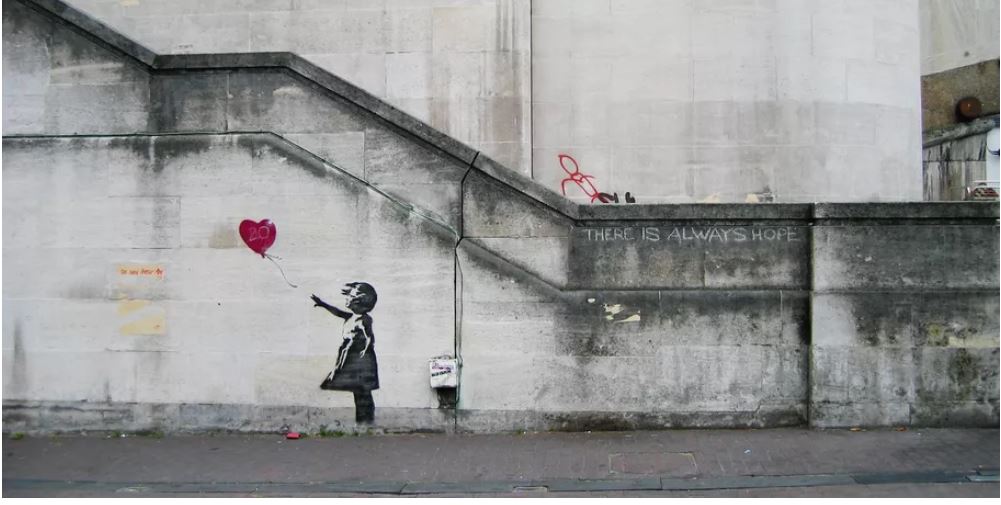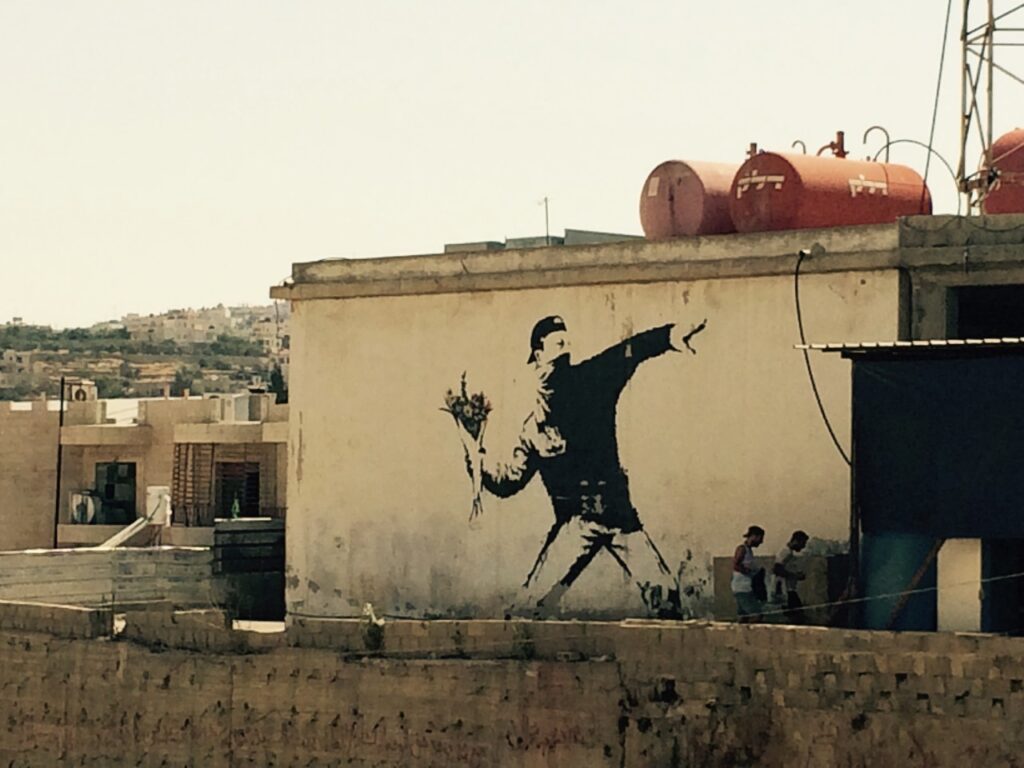
The Strange Case of Anti-Capitalist Art Making Capitalism Stronger
It begins, as all great fairy tales do, with a wall.
He doesn’t knock. He doesn’t ask. He just appears like a stencil-slinging ghost in the night, armed with spray cans and existential dread, and blesses the wall with a rat, or a child holding a protest sign, or a Queen’s guard making a cheeky gesture. And just like that — poof — the wall is no longer a wall. It’s art. It’s a statement. It’s a million-pound real estate miracle in the making.
Yes, dear reader, we live in a world where a rogue piece of street art meant to criticize capitalism can double the value of your house. Welcome to the Banksy Paradox: where graffiti becomes gold, anti-capitalist rats make property values squeal with joy, and rebellion is best enjoyed behind plexiglass.
Banksy, the eternal mystery wrapped in a hoodie, built his reputation on defacing walls with uncomfortable truths. He critiques war, consumerism, power, privilege — you know, the usual dinnertime conversation killers. His work is supposed to disturb, to rattle cages, to make you side-eye the nearest surveillance camera. But what it actually does these days? It makes your postcode more expensive.
Consider the real-life fable of a family in Bristol. One morning, they find a Banksy on the side of their garage. Not a scratchy teenage tag, not a love note to Becky — a real Banksy. Within hours, real estate agents circle like vultures in tailored blazers. The family cancels the house sale. They remove the garage door. They auction it off. The art meant to question capitalism has now paid for a vacation home in Tuscany.

Banksy’s work has become the high-end scented candle of gentrification — it smells like rebellion but burns in a luxury flat.
In theory, street art is the visual equivalent of yelling “DOWN WITH THE SYSTEM” from the rooftops. It’s supposed to be fleeting, raw, radical. You do it illegally. You risk getting caught. And for a few glorious days before the council paints over it, you’ve said something real, loudly, in public. But not if you’re Banksy. No, if you’re Banksy, someone might install bulletproof glass over your protest. Or carve your mural out of the wall entirely and fly it to Miami, like a rebellious Picasso on tour.
Of course, Banksy sees the absurdity. He tried to bite back. Remember that iconic moment in 2018 when he shredded his own painting right after it sold at auction? It was brilliant. The ultimate punk move. The art market gasped, then applauded, then gave it a higher valuation. Because even rebellion, it turns out, appreciates over time.
The moral of the story? Graffiti was once the voice of the voiceless — raw, urgent, and impossible to ignore. Now, too often, it’s a curated echo in a gallery, framed by gentrification and monetized rebellion. The rat with a Molotov cocktail has become a collectible. The wall that once shouted is now a backdrop for selfies.
So what happens when protest becomes property value? When a subversive stencil becomes a sales pitch?
It means the system isn’t just resilient — it’s hungry. It consumes critique, digests dissent, and sells it back to us as decor.
But maybe that’s the point. Maybe street art was never meant to be preserved, owned, or even fully understood. Its power was always in the act — the risk, the rupture, the refusal.
As designers, artists, architects, and citizens, we should be asking:
Can rebellion live in a city that sells everything?
Can art still shake foundations when it’s part of the floor plan?
Maybe it can. Maybe it still does — in alleys, under bridges, in moments of quiet defiance. Not in being protected, but in being alive.
Because when walls speak, they don’t need to be owned.
They just need someone to listen.
So listen closely. The spray cans are still rattling.




